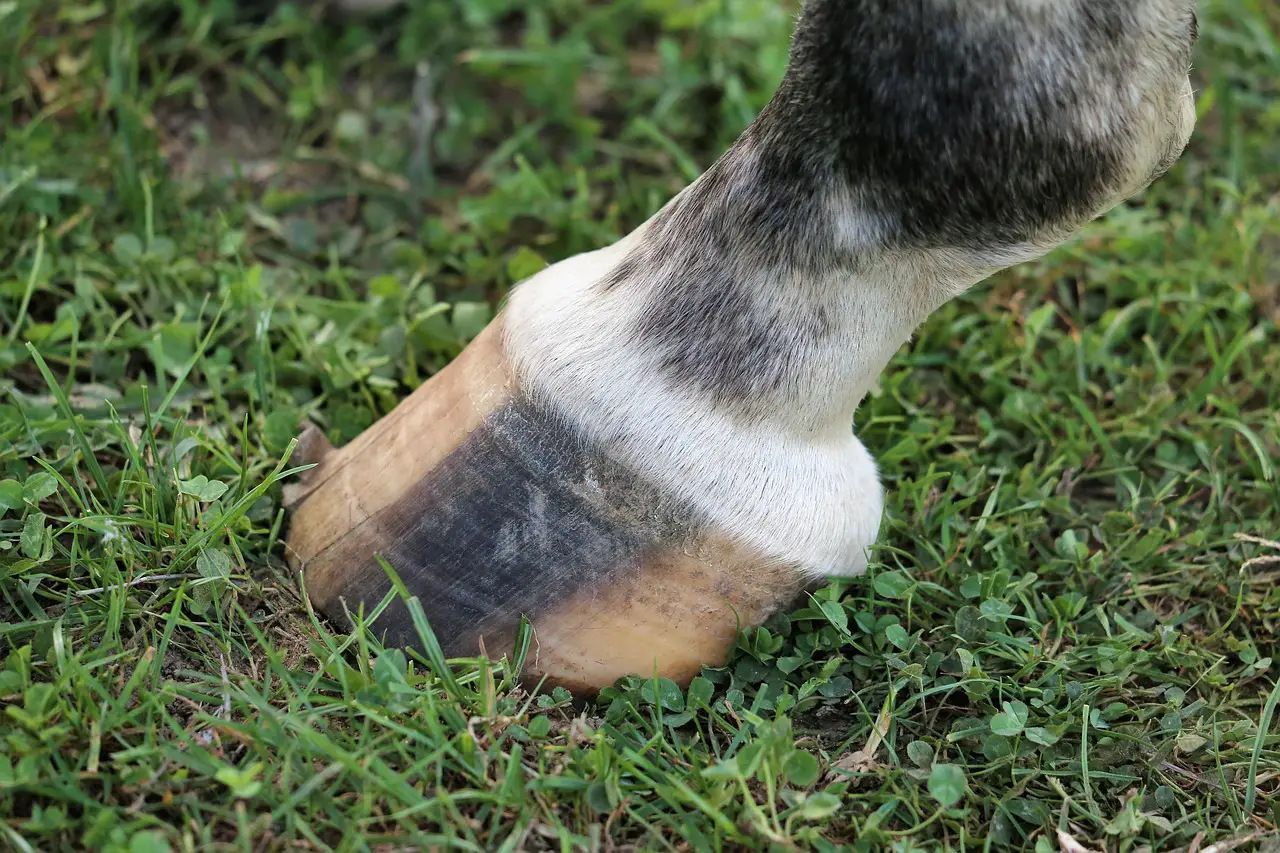Last Updated on March 4, 2022 by Allison Price
“The horse hoof is a complex marvel in natural engineering,” Susan Kauffmann, Christina Cline and The Essential Hoof Book . It is important to have an eye for balance and symmetry when diagnosing hoof problems.
There are many ways to balance and asymmetry the horse’s hoof. Flares are one example of imbalance and asymmetry that every owner, rider and trainer should be able to recognize and manage. These are the details that Kauffmann & Cline have provided in their book.
Flares refer to a form of hoof-capsule distortion in which the wall horn is pulled away from the coffin bones and stretched outward. A healthy hoof wall should be straight from the coronet to ground. Flares occur when a part of the wall is not aligned with that angle. You can see them by looking at the wall from the side or front in the case medial and lateral flares, or the foot from below.
Flares can appear in the toe or along both sides of the hoof. They can also develop for many reasons. These are:

* Mechanical refers to an imbalance or other problem that causes excessive pressure on a part or all the wall and forces it outward. This could be due to conformation, poor trimming, shoeing, excessive time between trims (overgrowth), or pain.
* Laminitis is a condition that causes damaged laminae, separation of the hoof wall and a loss of function.
* Nutritional refers to horse’s diet that contains too much sugar or starch. This weakens the wall connection, making them more vulnerable to flaring.
* Metabolic refers to a horse with a metabolic condition like insulin resistance or Cushing’s disease. This can cause the horse to respond in a way that could weaken the walls.
* Infection is usually secondary to walls already compromised by weak laminae.
Flare repair can be time-consuming and require a multi-pronged approach. Once a part of the hoof wall is separated, it can’t reattach. A flared hoof can only be improved by growing a new wall that is tightly connected to the coffin bone. This can only happen if the causes of the flare are addressed. Any leverage that may have been created by contact with ground must also be addressed. If the pressure of the shoe or ground is not released in the affected region, it will pull the wall outwards and weaken the connection between the laminae.
It is possible to ease the pressure by lowering the flared wall. The wall’s direction of force changes when it presses against the ground. Therefore, instead of the wall being pushed away by pressure, beveling it from below will allow the wall to stay tight. Be aware that flared walls are not attached to the wall and therefore do not provide much support.
However, the horse should not feel uncomfortable when the flare is removed. Most flares pull on the wall and are removed to provide relief. Sometimes, however, removing the flare can cause a horse to become sore. In these cases, the flare may be the only thing that keeps the horse comfortable. This is especially true for horses with damaged coffin bones or thin soles. If you attempt to correct the flare but the horse becomes sore, it may be best to let it go.
Your hoof-care provider may also be able to rasp the surface of flared walls to align them with healthy sections. This is thought to reduce levering forces and promote straighter wall growth. Others disagree with this approach. They believe that thinning the wall will weaken it further and increase the time it takes for it to heal. Both may be correct depending on the hoof.
No matter what trimming method you use to relieve a flare, you could be missing key pieces. It is common for nutritional or metabolic factors to play a role in weakening the laminar link. If they are, the flaring problem will likely continue. You must correct hoof imbalances if possible. Otherwise, you will continue to chase the flares it causes in the hoof. In some cases, the flaring caused by conformational defects and injuries is so severe that it is difficult to eliminate the problem completely.
Flaring should not be a problem in many cases, particularly if it is minor flares in the quarters. We see this in many horses’ hind feet. Flares can indicate an imbalance but many horses don’t have any. A minor flare should be monitored if the horse’s foot is healthy. However, if a horse develops a flare that has never happened before, it is something to be aware of.


